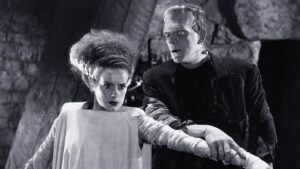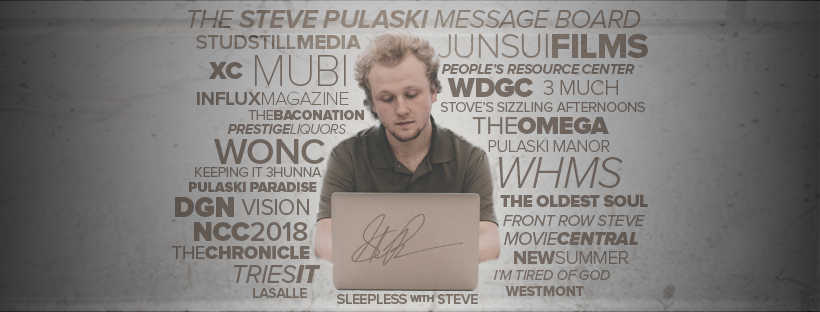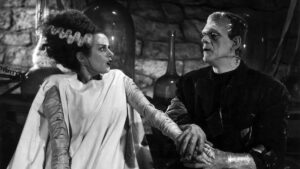Publication Date: 10-29-2025
Bride of Frankenstein (1935) review
Dir. James Whale
By: Steve Pulaski
Rating: ★★★
Bride of Frankenstein seems to be yet another example of a film that was destined for disaster. The film went significantly overbudget, past its original shooting deadline, had to work with the industries of Colin Clive and Boris Karloff, its two main actors, and the risk of having content issues with the censors.
However, the film got back on its feet with going overbudget and past its date, dealt with Clive’s broken leg by seating him in most of his scenes, dealt with Karloff’s hip injury by casting a stunt double, and were fortunate to have the layers of the film dealing with homosexuality and necrophilia go over the heads of the censors (albeit some select lines of dialog). As it stands, Bride of Frankenstein is a witty work of monster art and an intelligently crafted sequel made up of satire and meticulous art direction.
The film picks up where the original Frankenstein left off. Dr. Henry Frankenstein (Colin Clive) has given up on the idea of trying to “play God,” until his wife his kidnapped by his very own creation. To try and reason with the monster, and with the help of Doctor Pretorius (Ernest Thesiger), he creates the bride of Frankenstein, a lover for his original creation. The bride (also known as Mary Wollstonecraft Shelley) is played by Elsa Lanchester (this time she’s credited as “?”) in a performance of haunting beauty. The first image of her is the most revealing, with her unique hair and bulging eyes that seem to have direct access to your soul. The effect is achieved through the complex, strenuous aesthetic process of getting Lanchester to tape her eyes open.

The film is a rare case where the sequel is often regarded as better than the original, but I’m not too sure. The film is definitely great fun, in its self-referential, often obnoxious glory, but it falls significantly short of its predecessor, in my opinion, because of the lack of real jolts or suspense in the premise. However, its significance as a monster movie makes sense seeing as it deals with not one but two monsters, regardless of what direction it chooses to take.
I can appreciate, above all, the art direction and cinematography of Bride of Frankenstein, which stands the test of time for one of the best-lit films of the black and white era. It’s a rarity for a black and white film to feature such precise and explicit lighting as this film, making everything clear and visible to the audience. Such lighting is necessary when you have art direction as detailed and as meticulous as this.
One trait that seems to follow through with every single monster film from Universal, at this point, is the meticulous directorial style each director took. Whale, yet again, directs with a sense to include everything and exclude nothing. All the detail and decor of the macro-sets are captured and the immensity of everything is captured delightfully on screen thanks to Whale’s all-inclusive directing tactics.
Bride of Frankenstein is another film that is made even more significant, aside from being a great monster movie, because it should’ve been a complete disaster considering the problems it faced during production. However, it overcame such challenges and became a strong, memorable film thanks to its detailed sets, inclusive direction, great character acting, and a wonderful plot one can sink into. Films like these, even if I find myself not loving them as much as the masses, almost never lose their appeal.
My review of Dracula (1931)
My review of Frankenstein (1931)
My review of The Mummy (1932)
My review of The Invisible Man (1933)
My review of The Wolf Man (1941)
My review of Phantom of the Opera (1943)
Starring: Boris Karloff, Colin Clive, Ernest Thesiger, and Elsa Lanchester. Directed by: James Whale.
About Steve Pulaski
Steve Pulaski has been reviewing movies since 2009 for a barrage of different outlets. He graduated North Central College in 2018 and currently works as an on-air radio personality. He also hosts a weekly movie podcast called "Sleepless with Steve," dedicated to film and the film industry, on his YouTube channel. In addition to writing, he's a die-hard Chicago Bears fan and has two cats, appropriately named Siskel and Ebert!


